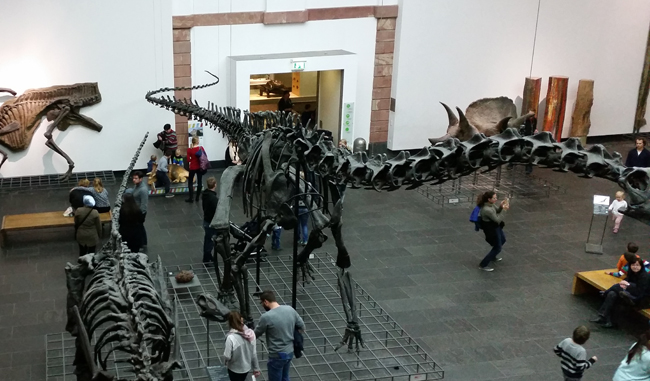Sauroposeidon The Tallest Known Dinosaur
Originally described from four cervical vertebrae (neck bones), discovered in Oklahoma (Antlers Rock Formation), Sauroposeidon is classified as a member of the Macronaria clade of sauropods and it might have been the tallest terrestrial animal ever. When the neck bones of Sauroposeidon were first found, it was thought that they represented petrified wood as they were so big. A number of other fossil specimens from Early Cretaceous strata have now been assigned to Sauroposeidon (Late Aptian to Early Albian faunal stages), intriguingly, the number of long-necked dinosaurs known from North America at this time in the Cretaceous is very low. Sauroposeidon may be the last known sauropod from North America until the evolution of Alamosaurus which is known from Upper Cretaceous strata nearly forty million years younger.
Sauroposeidon
Based on scaled up versions of the brachiosaurid Giraffatitan (G. brancai), it has been estimated that the height of the head of a fully grown Sauroposeidon (S. proteles) would have been around the twenty metres mark.
The actual size of this dinosaur is difficult to estimate, it may have been much more gracile than other members of the Macronaria. Some palaeontologists have speculated that Sauropseidon weighed as much as sixty metric tonnes and measured over thirty-two metres in length.
A Giant Sauropod Exhibit in a Museum

A sauropod (diplodocid) skeleton exhibit on display at the Frankfurt Natural History Museum (Naturmuseum Senckenberg). Picture credit: Everything Dinosaur.
Picture credit: Everything Dinosaur
The species name “proteles” is derived from the Greek and it means “perfect before the end”. This refers to Sauroposeidon’s status as one of the last sauropods known from Lower Cretaceous strata of North America. Sauroposeidon was probably a specialist, in terms of its feeding behaviour. If indeed, it was a super-sized brachiosaurid it would have specialised in feeding on the tops of trees. It was probably invulnerable to attack as an adult but young dinosaurs and juveniles were probably hunted by the large theropod Acrocanthosaurus (A. atokensis). Some palaeontologists have speculated that the famous “dinosaur chase” footprint fossils from the bed of the Paluxy River, Texas, represent a Sauroposeidon being stalked by an Acrocanthosaurus.
“Lizard of Poseidon”
The genus name is from the Greek meaning “lizard of Poseidon”, the Greek deity whose domain was the sea and who was thought to be responsible for earthquakes. In 1999, when press releases were sent out announcing the discovery of a huge dinosaur from the United States, “Earthquake lizard” seemed a highly appropriate name.
Everything Dinosaur stocks a range of sauropod figures, including the large models in the PNSO range: PNSO Age of Dinosaurs Figures and Models.






Leave A Comment